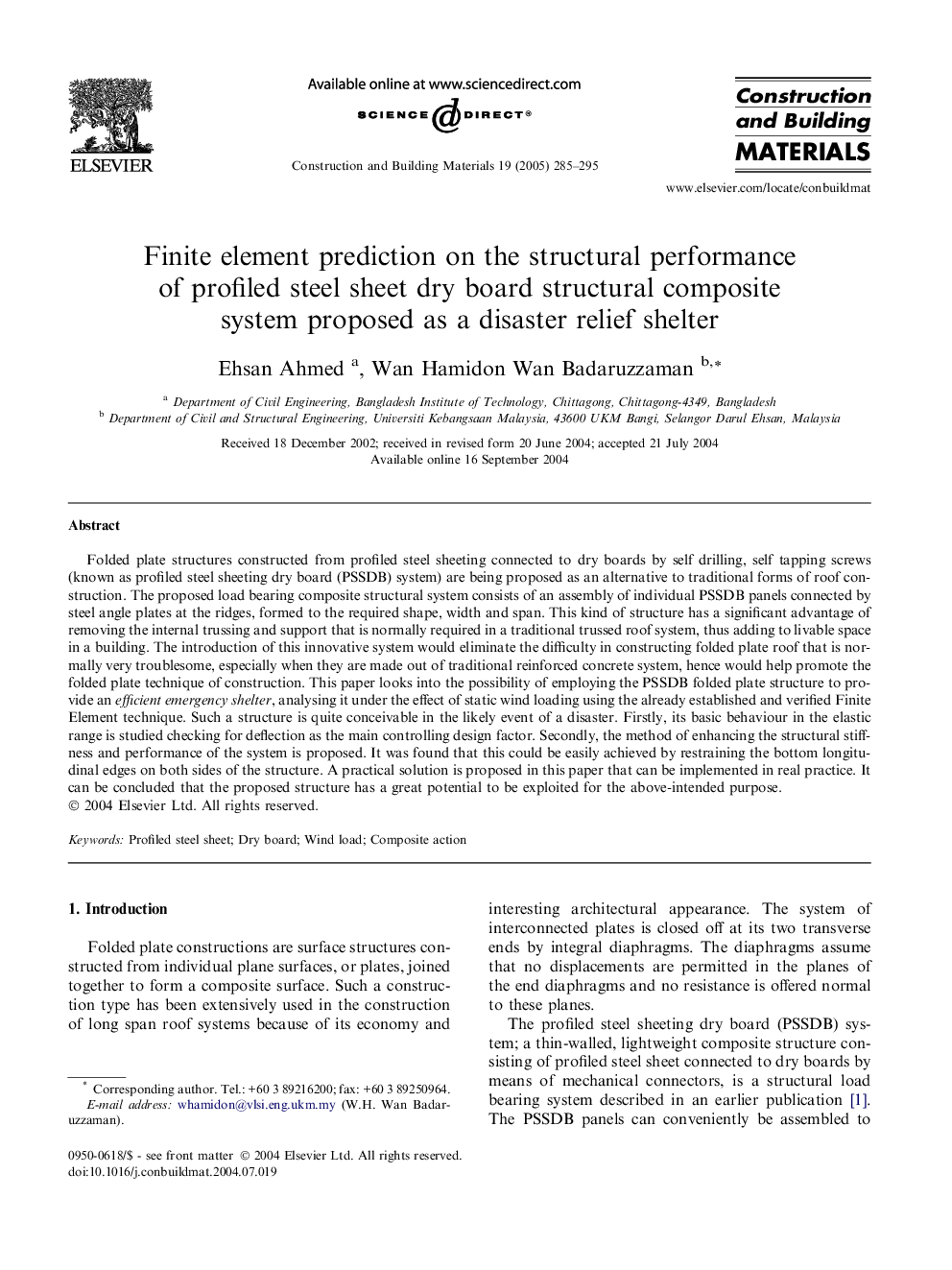| Article ID | Journal | Published Year | Pages | File Type |
|---|---|---|---|---|
| 10285502 | Construction and Building Materials | 2005 | 11 Pages |
Abstract
Folded plate structures constructed from profiled steel sheeting connected to dry boards by self drilling, self tapping screws (known as profiled steel sheeting dry board (PSSDB) system) are being proposed as an alternative to traditional forms of roof construction. The proposed load bearing composite structural system consists of an assembly of individual PSSDB panels connected by steel angle plates at the ridges, formed to the required shape, width and span. This kind of structure has a significant advantage of removing the internal trussing and support that is normally required in a traditional trussed roof system, thus adding to livable space in a building. The introduction of this innovative system would eliminate the difficulty in constructing folded plate roof that is normally very troublesome, especially when they are made out of traditional reinforced concrete system, hence would help promote the folded plate technique of construction. This paper looks into the possibility of employing the PSSDB folded plate structure to provide an efficient emergency shelter, analysing it under the effect of static wind loading using the already established and verified Finite Element technique. Such a structure is quite conceivable in the likely event of a disaster. Firstly, its basic behaviour in the elastic range is studied checking for deflection as the main controlling design factor. Secondly, the method of enhancing the structural stiffness and performance of the system is proposed. It was found that this could be easily achieved by restraining the bottom longitudinal edges on both sides of the structure. A practical solution is proposed in this paper that can be implemented in real practice. It can be concluded that the proposed structure has a great potential to be exploited for the above-intended purpose.
Related Topics
Physical Sciences and Engineering
Engineering
Civil and Structural Engineering
Authors
Ehsan Ahmed, Wan Hamidon Wan Badaruzzaman,
